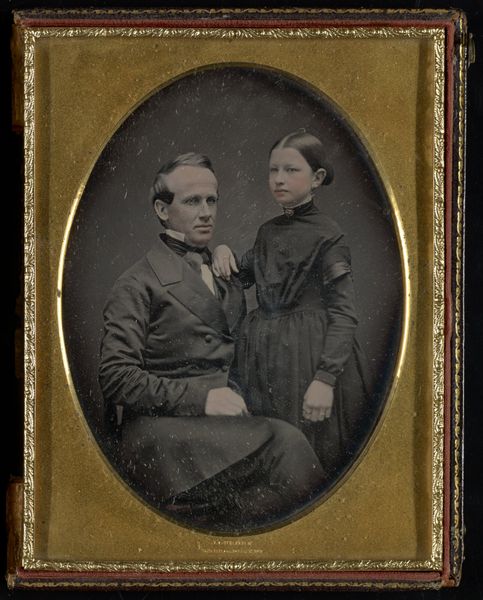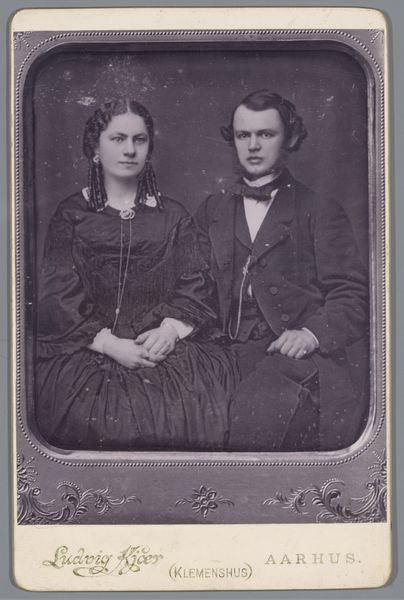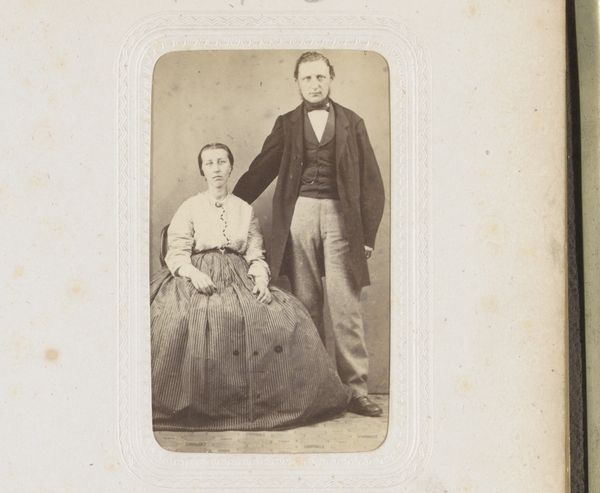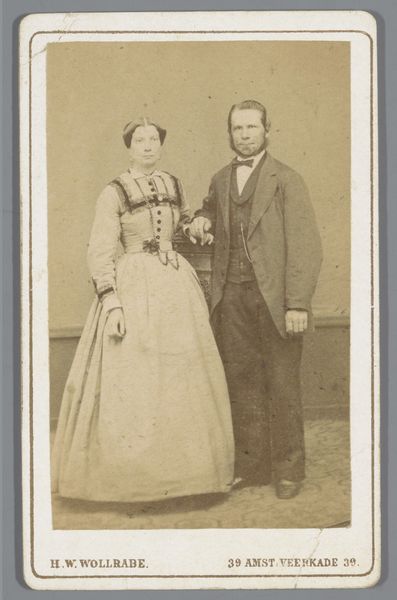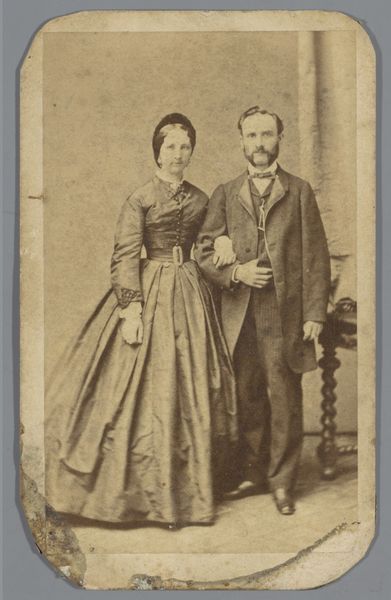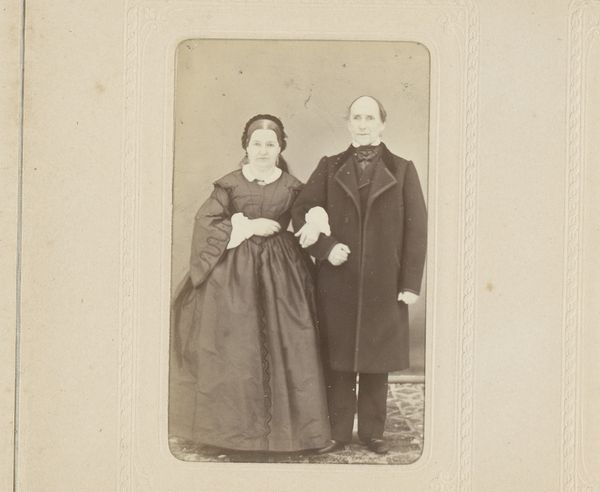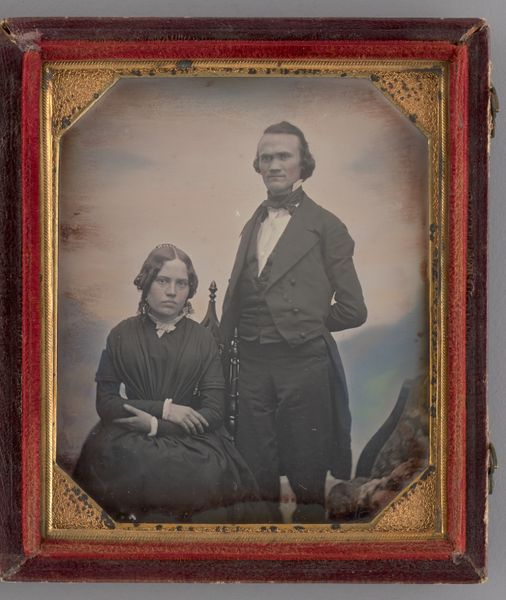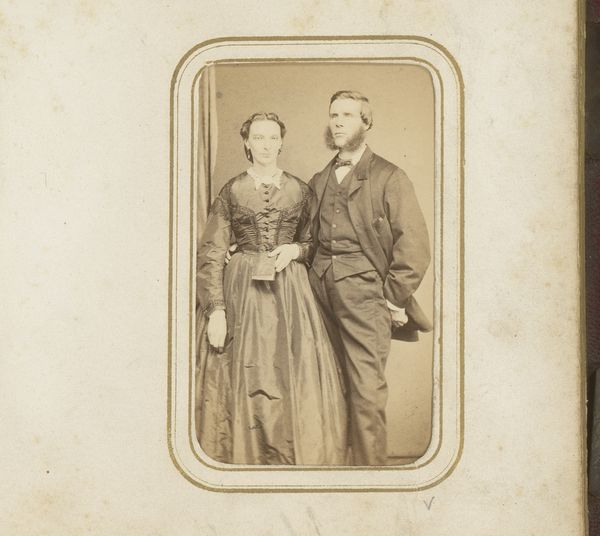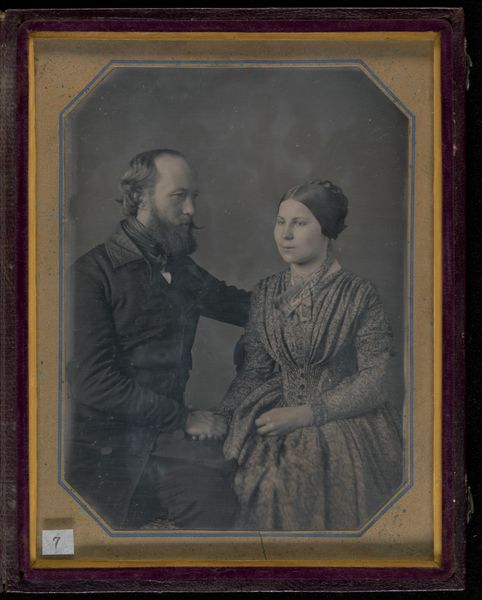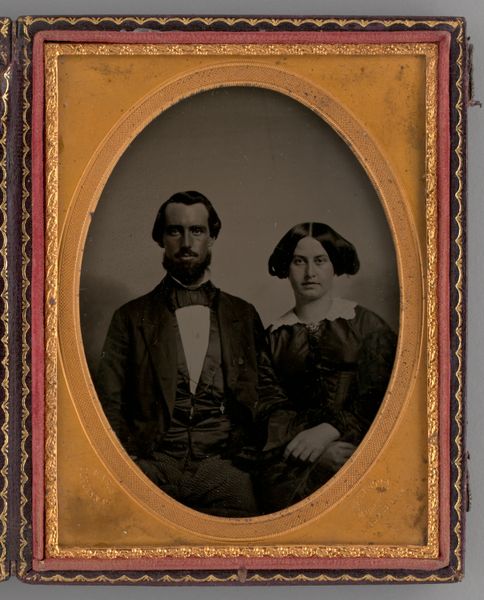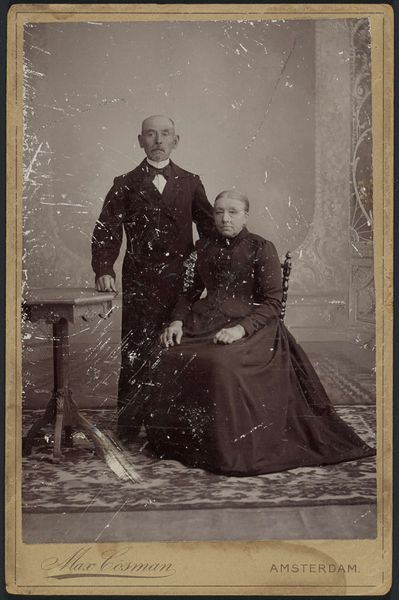
Phoebe Matthews and Captain Oliver Matthews 1839 - 1866
0:00
0:00
daguerreotype, photography
#
portrait
#
16_19th-century
#
daguerreotype
#
photography
#
historical fashion
#
history-painting
Dimensions: 10.8 × 8.3 cm (plate); 11.8 × 9.3 × 1.5 cm (case)
Copyright: Public Domain
Curator: This is a fascinating daguerreotype, dating from somewhere between 1839 and 1866, entitled "Phoebe Matthews and Captain Oliver Matthews," credited to Nathaniel C. Jaquith. Editor: My immediate feeling is…reserved. The figures are positioned so formally. Almost stoic, I think, even though it’s just a straightforward double portrait. Curator: The stillness, the very act of sitting for such a portrait, was itself a ritual. A solemn occasion, capturing an image meant preserving a specific memory. The daguerreotype process itself demanded that stillness. Editor: Absolutely, and that contributes to the image's power. But look at the context. What narratives aren’t being told? Here’s a sea captain with his wife. What were their positions in society, what were their access to privileges in an era deeply stratified? What’s the history beneath this veneer of bourgeois respectability? Curator: Fair point. But beyond socio-historical critique, what strikes me is the sheer human element. A ship's captain’s very masculine attire contrasted with his wife’s softer gown. Yet their intertwined hands communicate shared commitment and a bond spanning different roles and expectations. The white lace is evocative and meaningful in that contrast. Editor: True, there’s a quiet, undeniable intimacy present. However, these material elements are never neutral. We have to ask, who had access to such fashion? It speaks volumes about social standing, so it can only be seen within these broader socioeconomic forces in mind. The lace symbolizes wealth more than "innocence". Curator: That is fair; we can consider their socio-economic class signified by these clothes. I will concede the importance of that interpretation! What lingers is how art endures as witness, even passively revealing social dynamics with its careful iconography. Editor: Right, what feels most interesting to me is excavating the narratives this photograph conceals, about the lives they led in conjunction with society. That's how a simple portrait transforms into an invitation to interrogate history and its complexities. Curator: I find that consideration inspiring; I see what remains, that they were a man and woman who carved their small corner in the great historical story. Editor: Agreed; by critically examining what's presented, and understanding the greater context, the hidden human realities that might have been lost in a silent photo can then surface, revealing the nuances behind these symbols of the past.
Comments
No comments
Be the first to comment and join the conversation on the ultimate creative platform.

